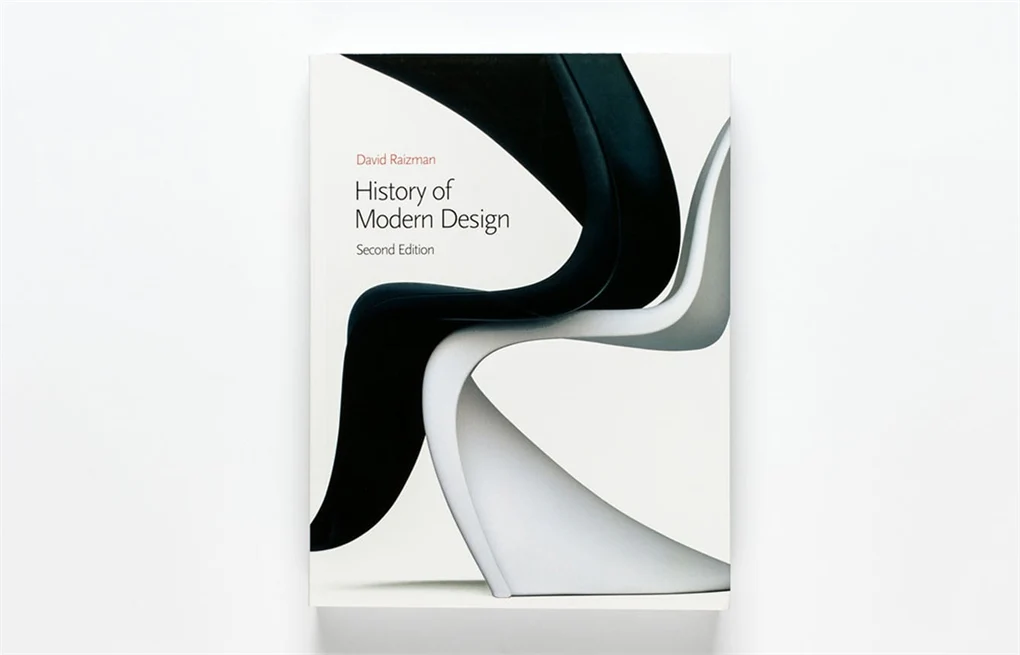Embark on a captivating exploration of the design world through the lens of David Raizman, a pivotal figure in the history of modern design. Delve into his groundbreaking ideas and their profound impact on how we perceive and interact with objects today. Discover the remarkable legacy of David Raizman and his contributions to a more stylish and functional world.
History of Modern Design: David Raizman
David Raizman’s influential book, “History of Modern Design,” stands as a cornerstone in design literature. This comprehensive guide takes readers on an enlightening journey through time, tracing the intricate connections between design, technology, art, and society from the Industrial Revolution to the present day.
Raizman’s work, “Graphics and Products,” delves specifically into the transformative impact of the Industrial Revolution on design. This period marked a significant shift, with mass production capabilities revolutionizing the relationship between designers, craftspeople, and their creations. Raizman suggests that this era served as a turning point, where design began to adapt and respond to emerging technologies, moving away from traditional practices.
The allure of Raizman’s work lies in his ability to seamlessly blend historical facts with a genuine appreciation for design aesthetics. He goes beyond merely recounting events; he illuminates their significance and fosters a deeper understanding of their impact.
The second edition of “History of Modern Design” enhances the reading experience with a wealth of visual aids. Abundant pictures and illustrations bring the history of design to life, vividly portraying the evolution of design trends through different eras.
Raizman’s decades of research and writing on design have left an indelible mark on the field. His books are considered essential reading for design students and continue to be invaluable resources for scholars. By connecting the past and present, Raizman’s insights inspire new generations of designers, solidifying his legacy as a leading voice in design history.
What is the History of Modern Design by David Raizman About?
Raizman’s “History of Modern Design” is more than just a chronological account of design trends; it’s an exploration of the “why” behind the “what.” The book delves into the historical context, examining how social, economic, and technological forces have shaped the evolution of design.
The Industrial Revolution, with its advent of mass production, serves as a focal point. This period, Raizman argues, led to a fundamental shift in design thinking, prompting a move away from traditional craftsmanship towards more industrial methods.
The influence of social movements and philosophical ideas is also explored. For instance, Raizman examines the impact of the Arts and Crafts movement, which championed handmade goods and a return to simpler times. He also analyzes the rise of influential schools like the Bauhaus, highlighting their enduring impact on modern design principles such as functionality and minimalism.
Raizman’s insightful analysis extends beyond aesthetics, considering the interplay of design with broader historical contexts. He might argue, for example, that the rise of consumer culture in the 20th century directly influenced the development of design movements focused on mass production and affordability. This holistic approach provides readers with a nuanced understanding of how design reflects and responds to the complexities of the world around it.
Key Takeaways:
- Beyond Timelines: Raizman’s book goes beyond listing dates and names, offering a deeper exploration of the ideas and forces that have shaped design history.
- Design in Context: The book emphasizes the interconnectedness of design with technology, societal needs, and cultural trends.
- A Multifaceted Conversation: Raizman highlights the dynamic relationship between design and various fields, including art, culture, politics, and technology, making it a compelling read for anyone interested in understanding the complexities of the modern world.
[Citation: Raizman, D. (2018). History of modern design: Third edition. Laurence King Publishing.]
Who is the Father of Modern Design?
The question of who deserves the title of “father of modern design” is a complex one, akin to choosing a favorite pizza topping – there’s no single right answer. The emergence of modern design wasn’t the work of a solitary genius but rather a collective effort fueled by a confluence of innovative minds.
These pioneers challenged conventional design norms, ushering in an era of experimentation and innovation. They embraced new materials like steel and glass and championed a design ethos that prioritized functionality and efficiency.
Let’s consider some of the leading figures in this design revolution:
- Walter Gropius: The visionary founder of the Bauhaus school in Germany, Gropius promoted a holistic approach to design, merging art, architecture, and craftsmanship. He believed in the power of simple forms, clean lines, and designs that were both beautiful and accessible to all.
- Mies van der Rohe: This German-American architect championed simplicity and elegance in his designs. Known for his minimalist aesthetic and iconic phrase “less is more,” Mies van der Rohe’s use of steel and glass created airy, open spaces that epitomized modern architecture.
- Le Corbusier: A Swiss-French architect known for his innovative approach to urban planning and residential design, Le Corbusier viewed buildings as “machines for living.” He embraced new materials like concrete and challenged traditional notions of home design, advocating for open floor plans and a harmonious relationship between architecture and the environment.
These visionaries, along with countless other talented individuals, reshaped the landscape of design. Their emphasis on functionality, innovative materials, and simplified aesthetics continues to resonate today. While crowning a single “father” might be impossible, we can appreciate the collective contributions of these pioneers who shaped the modern world we know today.
What is the History of Modernism Design?
Modernism, a transformative movement in architecture and design that flourished between 1917 and 1965, marked a significant departure from the ornate and elaborate styles of the past. This era embraced simplicity, functionality, and the innovative use of materials like steel and glass.
Architects such as Le Corbusier, Mies van der Rohe, and Walter Gropius emerged as leading figures, advocating for buildings that were not only aesthetically pleasing but also practical and accessible to a wider population. Their designs, characterized by clean lines, open floor plans, and an abundance of natural light, continue to influence architectural trends today.
One of the most impactful styles to emerge from Modernism was the International Style. This globally influential movement championed a universal aesthetic, with buildings characterized by clean lines and simple forms appearing in cities from Paris to Tokyo. However, Modernism wasn’t limited to a single, rigid style. In regions like Brazil, architects embraced the core principles of Modernism while infusing their own cultural and regional influences, resulting in innovative urban planning concepts and striking architectural designs.
The legacy of Modernism is deeply embedded in our built environment. From the layout of our cities to the design of our homes and everyday objects, the principles of functionality, simplicity, and innovation continue to shape our world. The next time you admire a minimalist chair or appreciate the open floor plan of a building, remember that you’re witnessing the enduring impact of this revolutionary movement.
Key Takeaways:
- Modernism represented a paradigm shift in architecture, prioritizing practicality, clean design, and the use of new building materials.
- Imagine spaces bathed in natural light, minimalist furniture with geometric shapes, and open floor plans that create a sense of spaciousness – these are hallmarks of Modernism’s impact.
- Visionary architects like Le Corbusier and Mies van der Rohe played instrumental roles, promoting designs that were both functional and aesthetically pleasing without unnecessary complexity.
- Modernism transcended geographical boundaries. The International Style, with its universal aesthetic, gained global traction, while architects in places like Brazil adapted Modernist principles to their unique contexts, leading to groundbreaking innovations in urban design.
- The influence of Modernism is evident in contemporary architecture and design, particularly in the creation of open, functional spaces that cater to modern living.
Citation:
- Raizman, D. (2009). History of Modern Design: Third Edition. Laurence King Publishing.
Explore further: Delve into the fascinating history of iconic treats and landmarks:
- Discover the history of Milk Duds, a beloved candy with a rich past.
- Dive into the intriguing history of Old Ebbitt Grill, a historic restaurant that has been a Washington, D.C. landmark for over 150 years.
- Senior at What Age: Benefits & Eligibility Guide - March 29, 2025
- Unlocking Senior Benefits: How Old is a Senior? Your Complete Guide - March 29, 2025
- Master Russian Politeness:A Guide to Saying Please - March 29, 2025
















